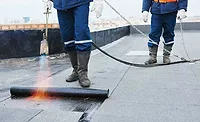Give Your Maintenance Business a Lift
The business of what we used to call commercial roof “repair” continues to change and grow. Today we call it “repair and maintenance,” “roof management,” or “roof asset management.” And the difference is much more than some innovative marketing terminology.
Mobile apps for tracking and reporting on all facets of existing roof conditions are improving at light speed. If you’re not offering your clients a portal where they have 24/7 access to what’s going on with their roofs, you really need to get with the program(s). And there are some very intriguing programs to choose from today.
Roof maintenance software systems offer more than a client interface, but this will continue to be the must-have piece of the apps. Tracking your materials and productivity has always been essential, but owners are demanding more in the way of transparency and you must find ways of delivering it to stay in the game.
Great client reports are often delivered most effectively by use of photos and/or videos. Many clients are managing their roof assets from remote locations. They trust you to keep their roofs in good working order, but communicating what you’re dealing with to them by way of a written report or progress invoice may not be as convincing as seeing what you see.
Cloud computing has made a tremendous difference in your ability to manage the huge chunks of data generated by photos and videos. And I believe we’re in the initial stages of an upswing that will have job-progress photos as a typical part of any commercial roofing project, whether it’s a simple repair or a full roof installation or replacement.
Taking it a step further, I believe the use of drones (flying cameras) as part of your roofing business is about to increase dramatically. They may be deployed to conduct roof inspections and photograph or video job progress where drone operations may be conducted according to Federal Aviation Administration (FAA) regulations. Not just for inspections or marketing, drone images may be used for accurate measuring of roofs and generating 3-D images and wireframes through a variety of online resources as well as conducting infrared roof surveys.
To be honest, I carry a bias on this topic since I recently followed through with a threat made in this column last December. I bought a drone, insured it (me, actually) and obtained a certification from the FAA to fly it on a commercial basis. I’m not planning to do any roof inspections; I just felt that this was an important enough development in the roofing industry to become engaged.
All this technology is great, but the most important part of successful roof management is still the technician who must assess the issues, propose solutions and then perform the needed repairs. This includes taking the photos and/or videos, and many firms require their technicians to manage customer contacts and invoicing as well.
Finding, managing and holding onto these high-value technicians continues to be one of the biggest challenges the industry faces today, but stay tuned. There are forces in the industry working on recruiting and training solutions that will begin to develop a base of workers to fill these needs. We’ll report on each of them continuously as they develop.
Looking for a reprint of this article?
From high-res PDFs to custom plaques, order your copy today!





